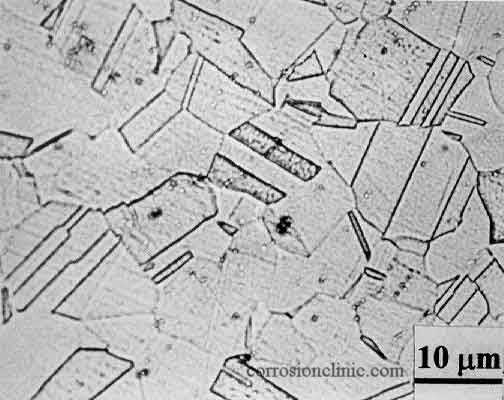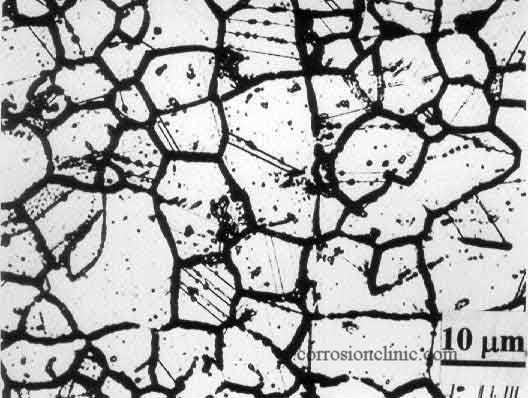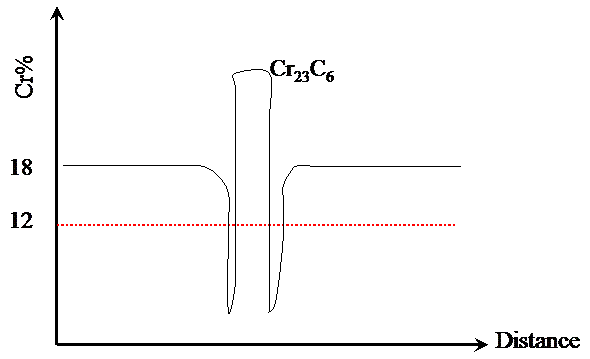|
|
|
|
• Galvanic • Crevice • Pitting • Intergranular • Weld Decay • Knife-Line Attack • Exfoliation • SSC • LME • MIC • SCC • Fatigue • Index |
|
Different Types of
Corrosion
|
|
Intergranular Corrosion (Cracking) |
|
|
Recognition of Intergranular Corrosion |
|
|
What is intergranular corrosion? Intergranular corrosion is sometimes also called "intercrystalline corrosion" or "interdendritic corrosion". In the presence of tensile stress, cracking may occur along grain boundaries and this type of corrosion is frequently called "intergranular stress corrosion cracking (IGSCC)" or simply "intergranular corrosion cracking".
"Intergranular" or 'intercrystalline" means between grains or crystals. As the name suggests, this is a form of corrosive attack that progresses preferentially along interdendritic paths (the grain boundaries). Positive identification of this type of corrosion usually requires microstructure examination under a microscopy although sometimes it is visually recognizable as in the case of weld decay.
The photos above show the microstructure of a type 304 stainless steel. The figure on the left is the normalized microstructure and the one on the right is the "sensitized" structure and is susceptible to intergranular corrosion or intergranular stress corrosion cracking.
|
|
|
Mechanisms of Intergranular Corrosion |
|
|
Intermetallics segregation at grain boundaries in aluminum alloys also causes intergranular corrosion but with a different name - "exfoliation".
|
|
|
Prevention of Intergranular
Corrosion |
|
How to prevent
intergranular corrosion? Intergranular corrosion can be prevented through:
|
|
|
For more details of
Intergranular Corrosion |
|
Where can I learn more about
intergranular corrosion? More details on intergranular corrosion are included in the following
corrosion courses which you can take as
in-house training courses,
course-on-demand, online
courses or distance
learning courses:
If you require corrosion expert witness or corrosion consulting service on intergranular corrosion, our NACE certified Corrosion Specialist is able to help. Contact us for a quote. |
|
|
Home | Subject Index | Contact Us | PDF |
Copyright © 1995-2025.. All rights reserved. |


